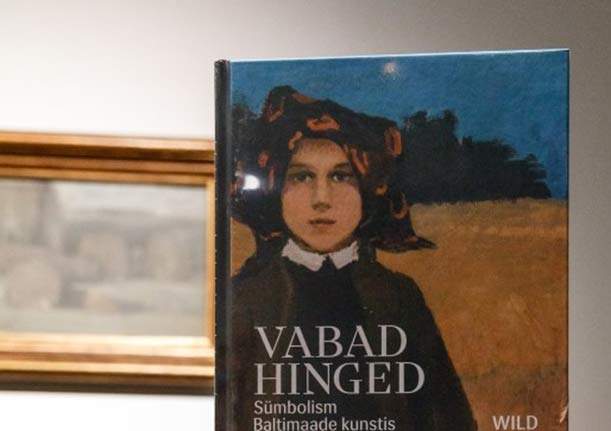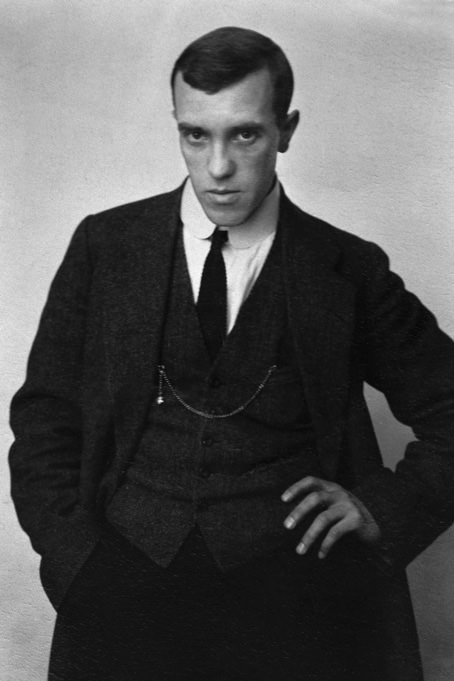A Quarter of a Million People in Paris Visited the Exhibition of Konrad Mägi, Kristjan Raud and Other Estonian Artists from the Era when Estonia Gained Independence
11 October 2018, Õhtuleht
Henry Linnard
The exhibition Free Spirits. Symbolism in the Art of the Baltic Countries was opened today at the Kumu Art Museum. The exhibition is a product of cooperation between the three Baltic states. It attracted 250,000 visitors from June to mid-September at the Orsay Museum in Paris. Nearly 150 works by significant artists from the art history of Estonia, Latvia and Lithuania from the end of the 19th century to the 1930s are on display at the exhibition. Among others, works by Kristjan Raud, Nikolai Triik, Konrad Mägi, Oskar Kallis, and many other great names of art are exhibited.

CATALOGUE: The exhibition is accompanied by a large catalogue in Estonian and English. This is the first comprehensive treatment of the symbolism of the Baltic countries, which is introduced by the essay Terra Incognita by Rodolphe Rapetti, one of the exhibition’s two curators. The catalogue additionally includes texts introducing the works displayed at the exhibition written by three art scholars from the Baltic states. (Erki Pärnaku)
‘The cooperation between our three countries has been exceedingly professional,’ Sirje Helme, the director of the Art Museum of Estonia, says in praise. ‘Putting together a major exhibition, where the content has to be argued out and priorities have to be set jointly, has gone smoothly and in a friendly manner,’ she adds. Helme describes the end of the 19th century and the outset of the 20th century as a highly important time for all three Baltic states. ‘This is not only because we gained our independence in 1918, but also because this was precisely the time when our professional art environment developed. It was like an immense soup cauldron from Russia across Europe all the way to Paris. That is also where our artists swam,’ she illustrates.
Helme considers the opening of this exhibition, which is part of the programme celebrating the centenary of the Republic of Estonia, at the Orsay Museum in Paris as the cherry that crowns the exposition. ‘Orsay is undoubtedly the preeminent museum for art from the 19th century and the early 20th century, not only from Europe but from all over the world. All who deal with this period keep its rhetoric well in mind. Orsay was very pleased with the numbers of visitors, which reached 250,000 visitors, and its media coverage in France was also exceedingly positive,’ is how she expressed her satisfaction. The exhibition was open in Paris until mid-September and now it has made its way to the Kumu Art Museum in Estonia, where it will be open until the start of February.
Distances are reduced
Jorma Sarv, head of the EV100 international programme, praises the Art Museum of Estonia for carrying through with one of the fundamental ideas that has been prioritised in preparing the entire jubilee programme. ‘The idea is to reduce to a minimum the mental distance separating those people who attend exhibitions in Paris, as happened with this beautiful exhibition, or in Rome or Washington from the exhibition visitor who strolls in Kadriorg Park,’ he explains. ‘This is an immense objective that has been brought to fruition with inspiring elegance. We witness this again and again. It’s wonderful and I think that its significance is only just starting to dawn on us,’ is his laudatory summation.
‘We have to admit to ourselves that it is one thing to tell Estonia’s story. This is important, but it is just as important to tell the story of the three Baltic countries and to this extent to be more in focus in Europe and to demonstrate those common features and differences. I’m very pleased that we have succeeded in this in some fields. The Art Museum is one of them,’ adds Sarv. The head of the EV100 international programme affirms that they will continue just as ambitiously and believes that the Art Museum has found many good friends for this purpose.
According to Liis Pählapuu, the curator of the exhibition, the title of the exhibition is Free Spirits because it very well characterises how young art enthusiasts came from simple farm families. ‘It is remarkable how young people who came from among rural folk went to study art outside of Estonia and then started studying and practicing art. This can be considered a miracle of sorts,’ finds Pählapuu. ‘That was their very courageous choice. They followed what their soul said to them,’ illustrates the curator of the exhibition.
Myths, the soul and nature
Pählapuu introduces the exposition through three themes that can be seen at the exhibition. The first of them introduces myths and legends of the Baltic countries. ‘The level of the stories and tales of the Baltic countries is exciting and personal. While Western artists have dealt in symbolism with very general themes related to human existence, the approach of artists in the Baltic countries was from the aspect of studying folk culture,’ she explains.
Concerning the second theme related to the soul, the curator says that here the various feelings of people have been observed. ‘From ecstatic exuberance to depression. This is inherent to the symbolism of that time and of decadence, its sub-form,’ says Pählapuu.
The third theme introduces the natural settings of the Baltic countries. ‘The way our artists have seen and interpreted nature is distinctive. They went as in depth in observing nature as Konrad Mägi did, for instance. This contact with nature is very mystical, deep and distinctive,’ finds the curator Pählapuu. ‘It is very fortunate that their art speaks to us nowadays as well. The fact that works of art created a century ago in a specific environment are expressive nowadays as well shows that a universal dimension has been achieved with these works.’

